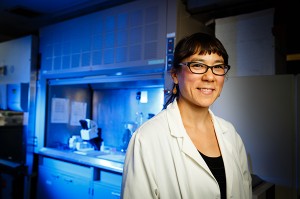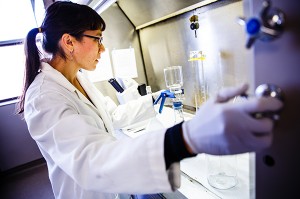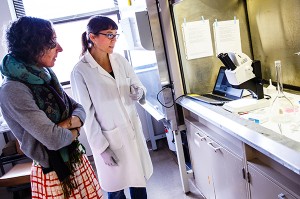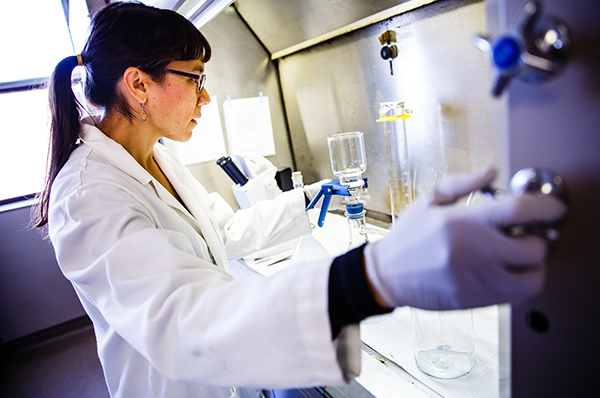
In the Pacific Ocean between Japan and the U.S. sits the Great Pacific Garbage Patch, which for many, conjures up an image of an “island” of garbage. But the reality is that this patch is made up of small plastic particles, some of which can’t even be seen by the naked eye.
So now, more than 100 years after the world’s first fully synthetic plastic was created, School of Public Health Environmental Health MS student Mary Kosuth is looking at whether or not we ingest these plastic particles.
“With microplastics, we’re still in the information gathering stage and trying to figure out the extent of the problem,” says Kosuth, who got her undergraduate degree in ecology from the University of Minnesota and now teaches environment courses at Dunwoody College of Technology. “We just use a chemical and assume it’s fine until we find out that it’s not fine. I want to change that.”
“There is already ample evidence that there are plastic particles in the ocean and with new research we’re becoming more concerned about tiny plastic particles that end up in our food and drinking water,” says Kosuth.
To start to understand how ubiquitous plastic is, Kosuth is looking at plastic particles found in beer, water, and salt, which may change the way a lot of people enjoy fries and a beer.

Based on a previous German study that found plastics in beer brewed in Germany, Kosuth’s research aims to investigate 12 beers brewed specifically in the Great Lakes region of the northern U.S. These beers use water from lakes Superior, Erie, Huron, Michigan, and Ontario in brewing. “New research is showing us that plastic is in the Great Lakes, as well as the rivers and tributaries feeding these lakes,” she says.
To examine salt, Kosuth went to grocery stores and purchased 12 kinds of salt, most coming from the sea. “If there’s plastic in sea water, it stands to reason that there is plastic in the salt coming from that water,” she says.
To start her research, Kosuth was introduced to SUNY-Fredonia Professor Sherri Mason, who is involved in the Great Lakes Study and is a leading researcher on plastics found in water. “She had always wanted to do a study on consumer products, so she invited me to New York and offered to train me,” says Kosuth.
For four days in summer 2016, Kosuth shadowed Mason and did preliminary work on beer and salt in Mason’s lab. “She taught me techniques for identifying plastic and really guided me through the experiment,” says Kosuth.

Now back in Minnesota, Kosuth is running her samples with the help of her adviser, Associate Professor Betsy Wattenberg, and hopes to publish her work. So far, she’s found a wide range of plastics in both beer and salt. “Through this work, I’m thinking about how I can reduce plastic use in my own life,” she says.
For the mother of two, who grew up on the shores of Lake Superior in Duluth, Minn., the fight is personal. “I want to make the world a less toxic place for my children,” says Kosuth. “By eliminating some plastic in the world, whether it’s here in Minnesota or on a global scale, I feel like I’m contributing,” she says.
“I always thought that scientists couldn’t have opinions, but through Sherri, I learned that you can be a scientist with a level head, but also an activist,” says Kosuth.
“I definitely hope this will lead to change and I want to be part of that movement.”

